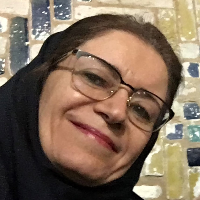The Role of Social Network Centrality Indices in Spatial Organization Based on Design Records (Case Study: Emergency Department of Hospitals)
One of the most important obligations of architects in the early stages of designing a plan is spatial organization planning in high functional sensitivity cases. In such buildings, a spatial organization as a part of architectural planning should be defined in accordance with the use, and the criteria for the use should be taken into account so that the plan can meet the functional needs. In order to achieve a proper functional organization of the spaces, the spaces need to be properly located depending on their function. The main hypothesis of this study is to apply the available knowledge in the design precedents to assess the spatial functional organization before construction and after the operation. With the emerge of space syntax theory in architecture, it has been possible to turn the plans into graphs. Therefore, for analyzing the nodes in the graph, it can be used from the centrality indexes raised in the theory of networks and social networks, which are subsets of the graph theory. One of the most important functional plans is the hospitals’ emergency department, which has two main therapeutic units consisting “under surveillance” and “urgency”. In this unit, there are spaces in which the main and vital operations of the emergency department are carried out. As a result, immediate access to these spaces and areas should be possible both for patients who have just entered this department and have an emergency condition (acute), and those who are temporarily admitted or treated in other areas of this department. This means the importance of locating such spaces and areas. Accordingly, the research was looking for indexes to make it possible to know how to organize the main areas of this department by applying them to the design data. The research methodology in this study is applied in terms of research purpose and is quantitative in terms of research nature. The method of data collection is based on the documentary method and the work doing method is by computer simulation, pre-implementation evaluation and post-operation evaluation. Sixty hospital’s emergency plans were selected as the statistical population (design case histories) for the research. Betweenness and proximity centrality indexes were calculated for all areas in the design data by CytoScape software. The main focus of the research is on the functional organization of the main emergency’s urgency area. It was found from the research based on the vital spaces and areas in the emergency department functioning, these spaces or the area in which they are located should be among the shortest paths between other spaces and areas (high betweenness centrality index) and the extent to which they are accessed from all the other spaces are equal (the proximity centrality index). As a result, this research has focused on two betweenness and proximity centrality indexes in order to analyze the organization of spaces and areas of the department. It became clear by calculating these indexes that the urgency area should be organized in such a way that it is of the highest betweenness and proximity centrality indexes.
- حق عضویت دریافتی صرف حمایت از نشریات عضو و نگهداری، تکمیل و توسعه مگیران میشود.
- پرداخت حق اشتراک و دانلود مقالات اجازه بازنشر آن در سایر رسانههای چاپی و دیجیتال را به کاربر نمیدهد.



